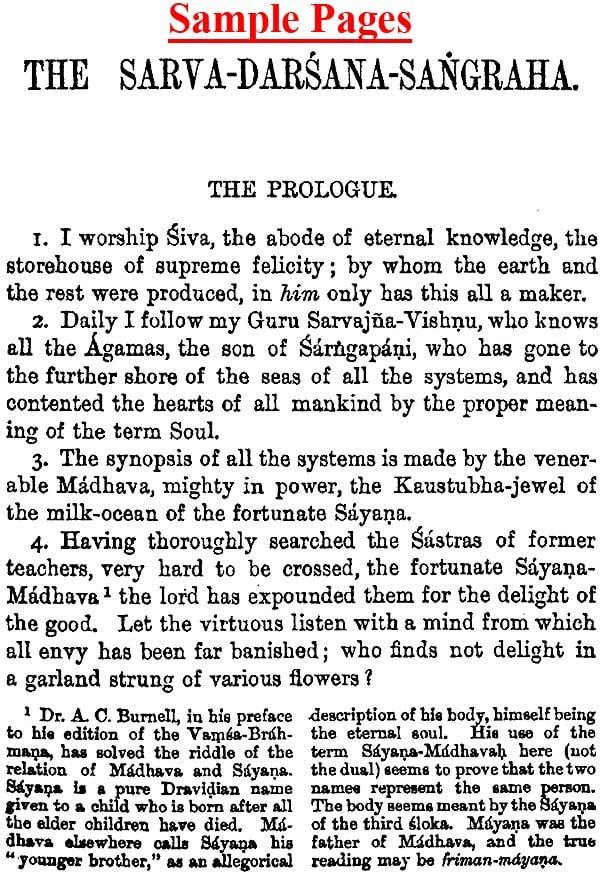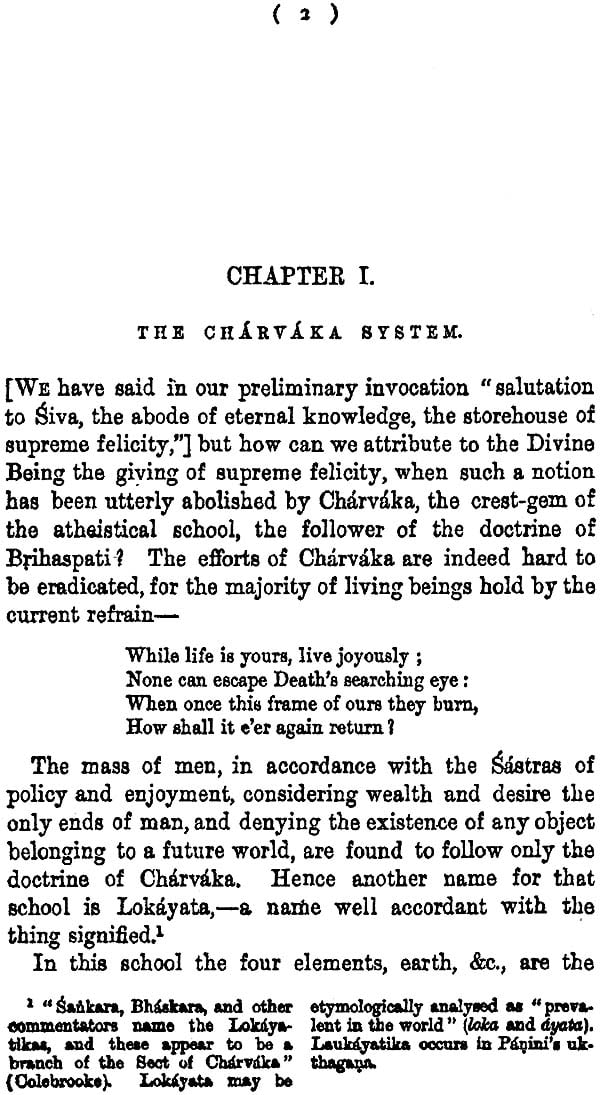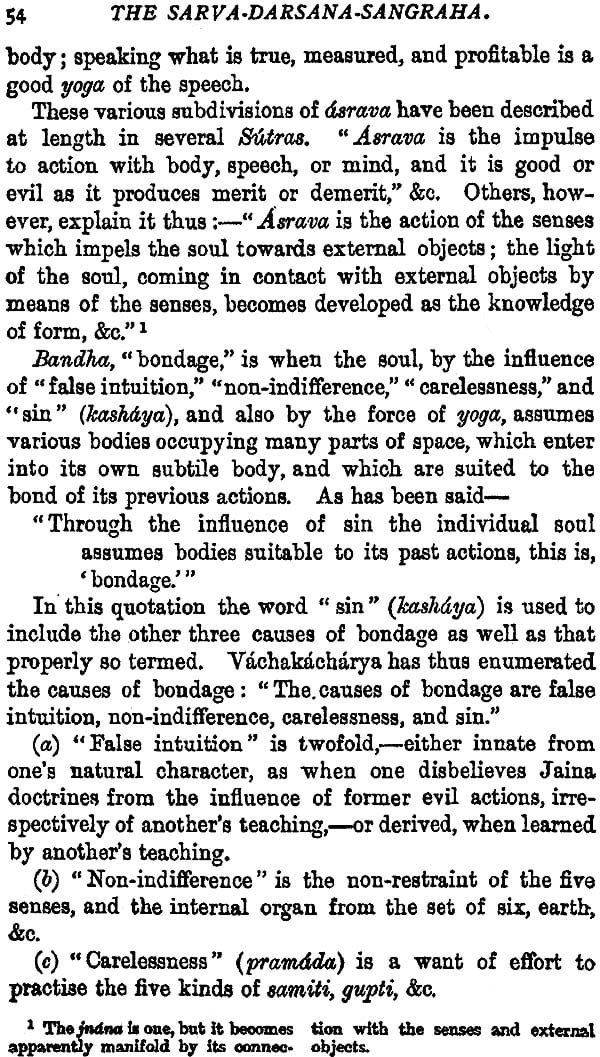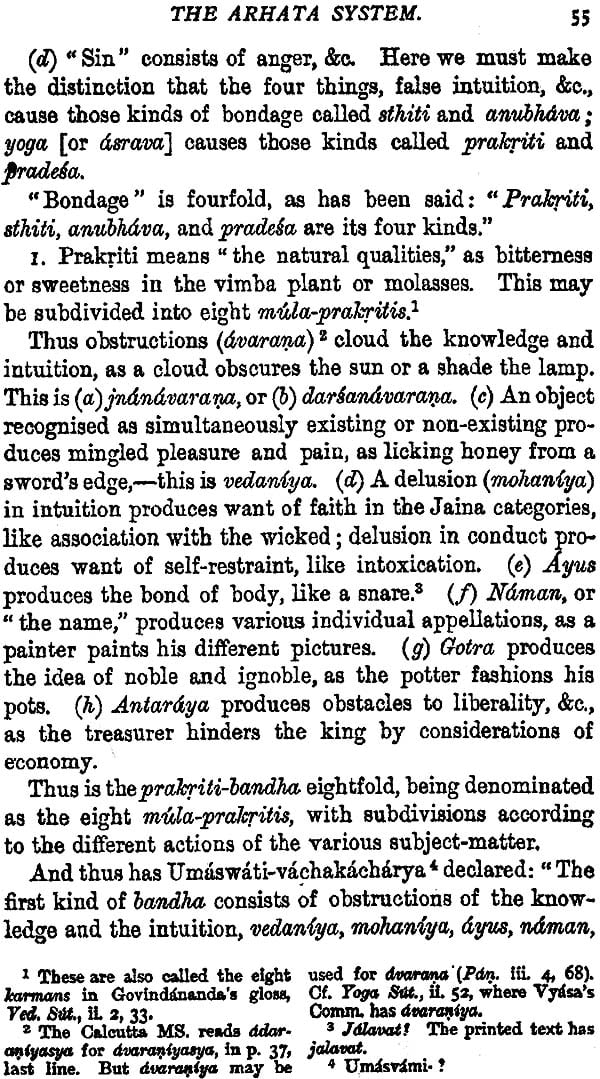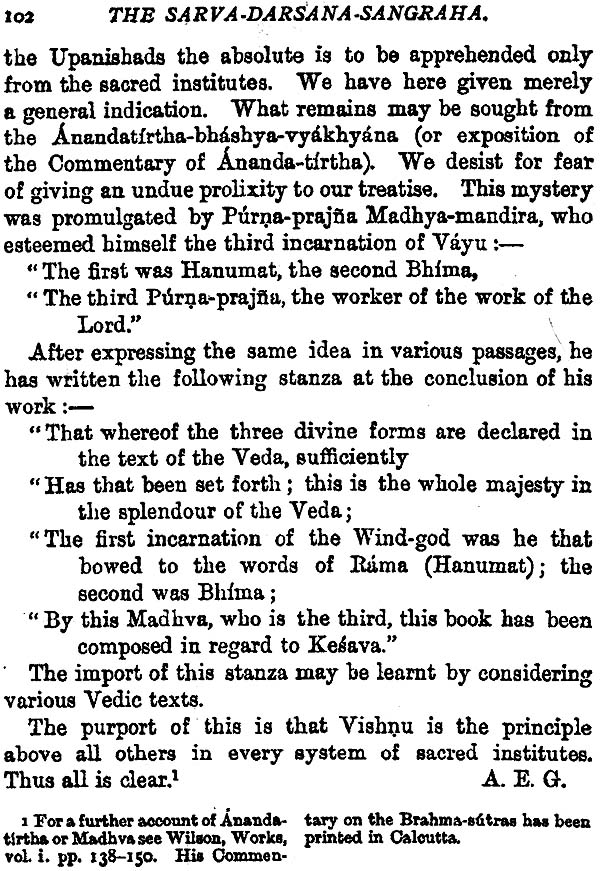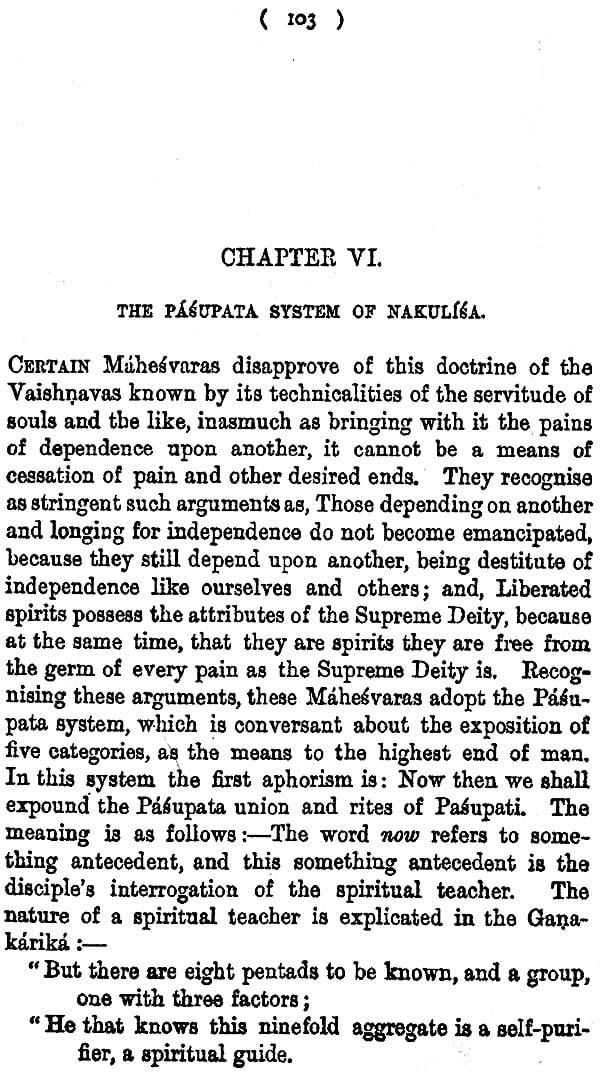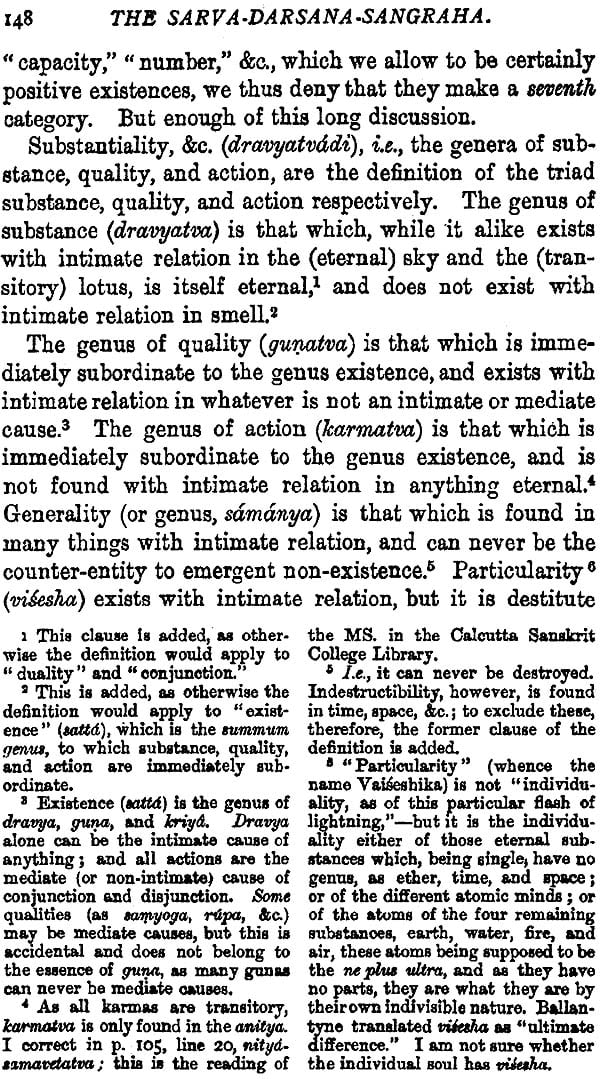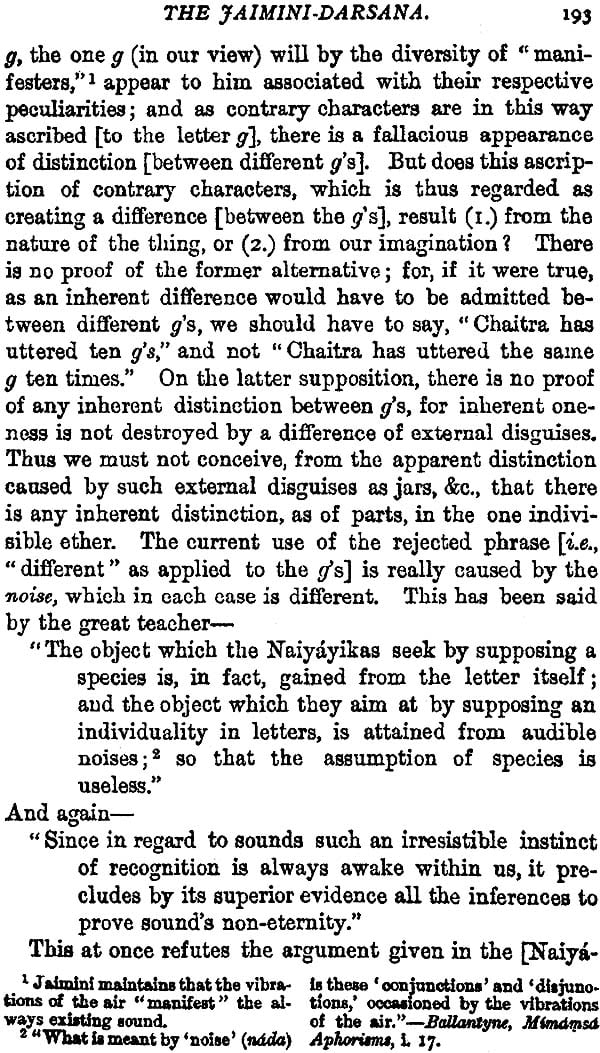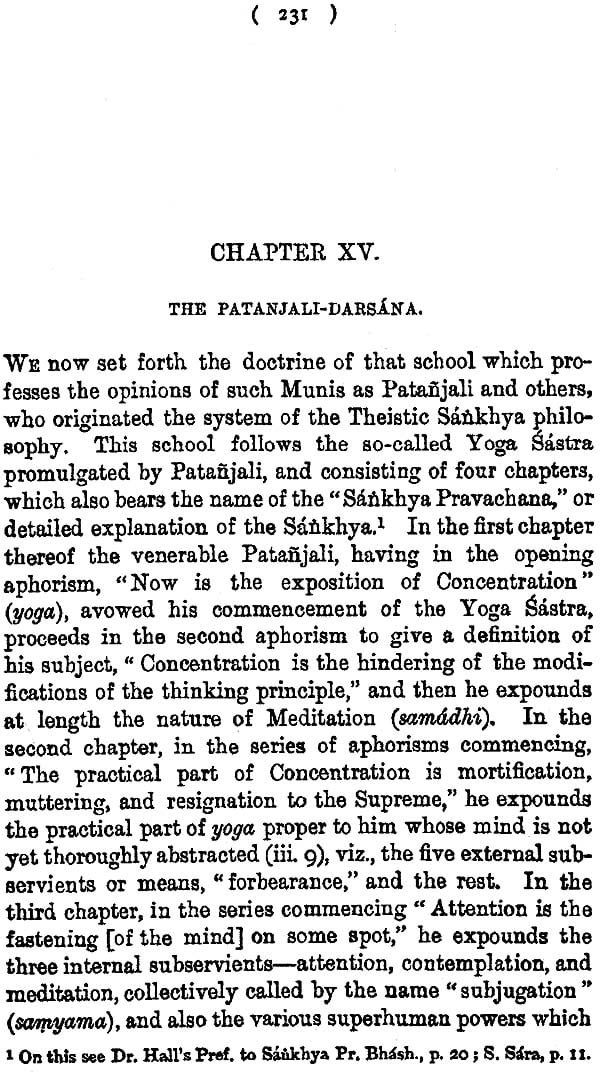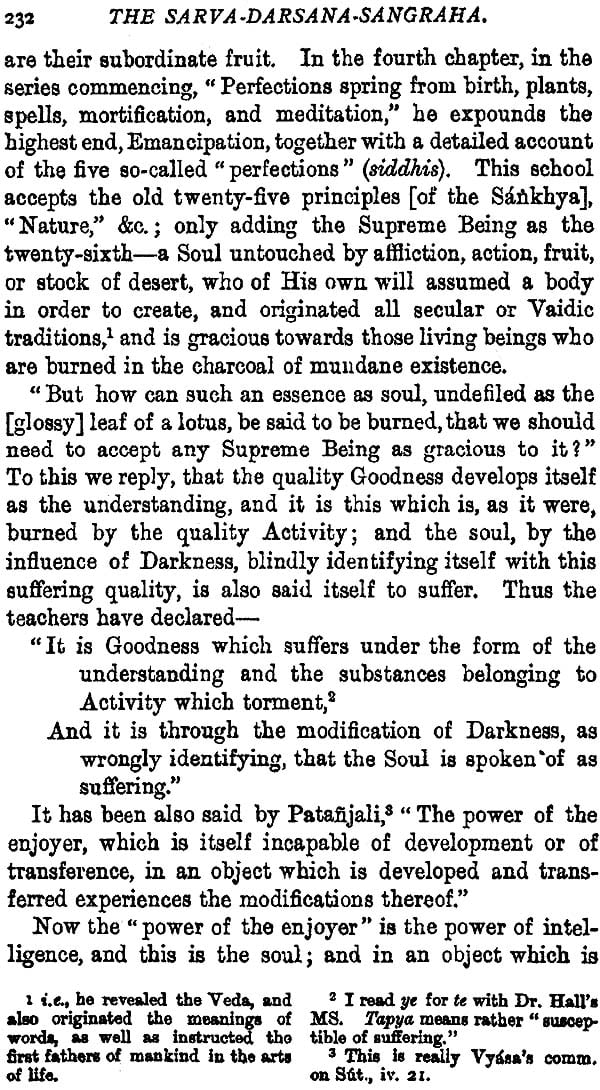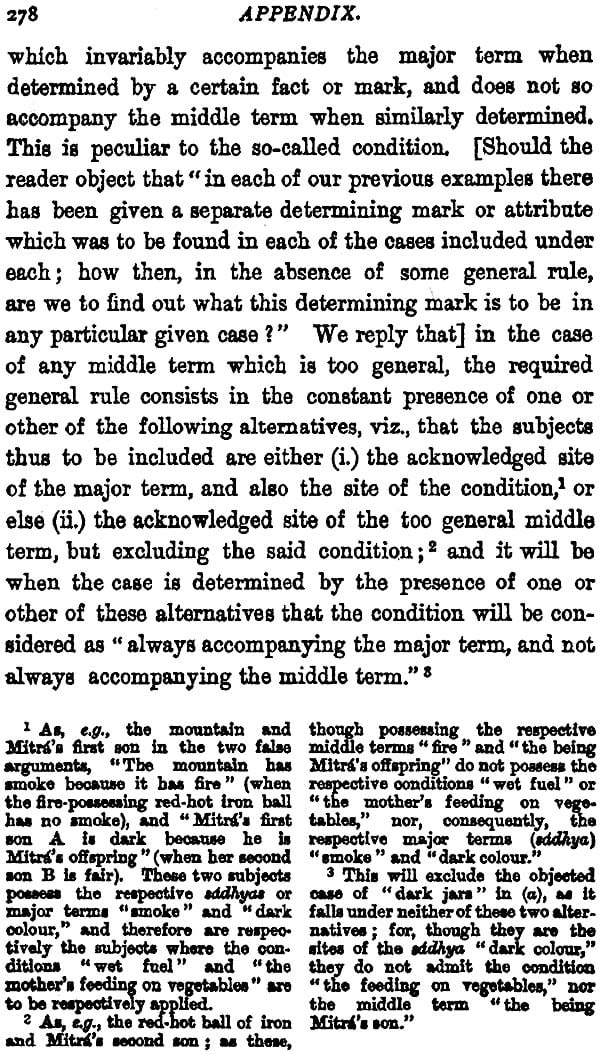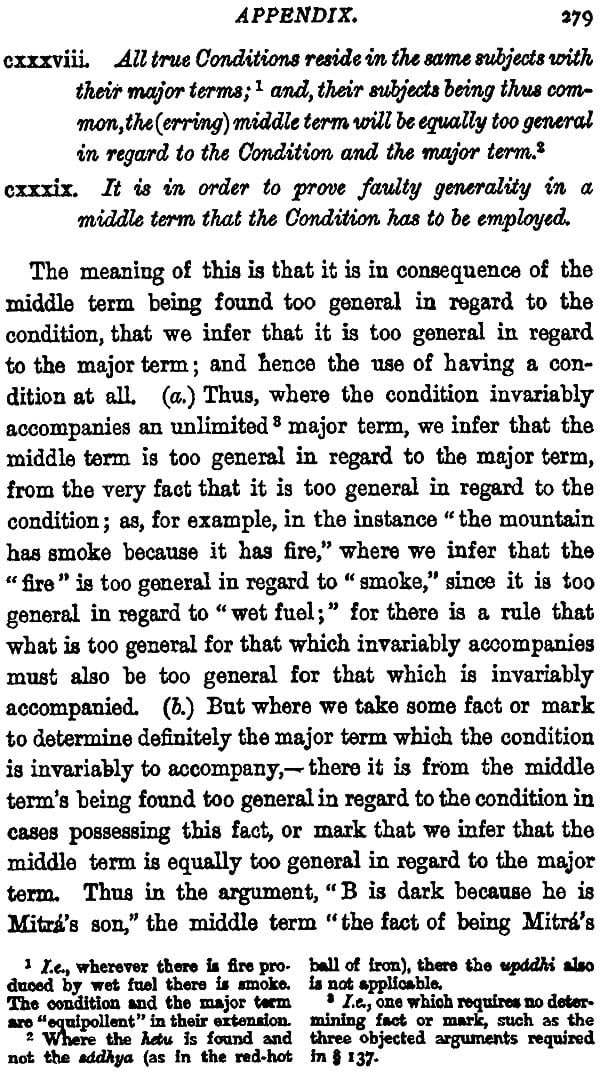
The Sarva Darsana Samgraha on Review of The Different Systems of Hindu Philosophy by Madhava Acharya
Book Specification
| Item Code: | NAK209 |
| Author: | E. B. Cowell and A. E. Gough |
| Publisher: | Kaveri Books |
| Language: | English |
| Edition: | 2017 |
| ISBN: | 9788174791962 |
| Pages: | 293 |
| Cover: | Hardcover |
| Other Details | 9.0 inch X 6.0 inch |
| Weight | 540 gm |
Book Description
I well remember the interest excited among the learned Hindus of Calcutta by the publication of the Sarva-darsana-samgraha of Madhava Acharya in the Bibliotheca Indica in 1858. It was originally edited by Pandit Isvara chandra Vidyasagara, but a subsequent edition, with no important alterations, was published in 1872 by Pandit Taranatha tarkavachaspati. The work had been used by Wilson in his cc Sketch of the Religious Sects of the Hindus" (first published in the Asiatic Researches, vol. xvi., Calcutta, 1828); but it does not appear to have been ever much known in India. MS. copies of it are very scarce; and those found in the North of India, as far as I have had an opportunity of examining them, seem to be all derived from one copy, brought originally from the South, and therefore written in the Telugu character. Certain mistakes are found in all and probably arose from some illegible readings in the old Telugu original. I have noticed the same thing in the Nagan copies of Madhava Commentary on the Black Yajur Veda, which are current in the North of India.
As I was at that time the Oriental Secretary of the Bengal Asiatic Society, I was naturally attracted to the book; and I subsequently read it with my friend Pandit Mahesachandra Nyayaratna, the present Principal of the Sanskrit College at Calcutta. I always hoped to translate it into English; but I was continually prevented by other engagements while I remained in India. Soon after my return to England, I tried to carry out my intention; but I found that several chapters, to which I had not paid the same attention as to the rest, were too difficult to be translated in England, where I could no longer enjoy the advantage of reference to my oId friends the Pandits of the Sanskrit College. In despair I laid my translation aside for years, until I happened to learn that my friend, Mr. A. E. Gough, at that time a Professor in the Sanskrit College at Benares, was thinking of translating the book. I at once proposed to him that we should do it together. and he kindly consented to my proposal; and we accordingly each undertook certain chapters of the work. He had the advantage of the help of some of the Pandits of Benares, especially of Pandit Rama Misra, the assistant Professor of Sankhya, who was himself a Ramanuja; and I trust that, though we have doubtless left some things unexplained or explained wrongly, we may have been able to throw light on many of the dark sayings with which the original abounds. Our translations were originally published at intervals in the Benares pandit between 1874 and 1878; but they have been carefully revised for their present republication.
The work itself is an interesting specimen of Hindu critical ability. The author successively passes in review the sixteen philosophical systems current in the fourteenth century in the South of India, and gives what appeared to him to be their most important tenets, and the principal arguments by which their followers endeavoured to maintain them and he often displays some quaint humour as he throws himself for the time into the position of their advocate, and holds, as it were, a temporary brief in behalf of opinions entirely at variance with his own.
We may sometimes differ from him in his judgment of the relative importance of their doctrines, but it is always interesting to see the point of view of an acute native critic. In the course of his sketches he frequently explains at some length obscure details in the different systems; and I can hardly imagine El. better guide for the European reader who wishes to study anyone of these Darsanas in its native authorities. In one or two cases (as notably in the Bauddha, and perhaps in the Jaina system) he could only draw his materials second-hand from the discussions in the works of Brahinanical controversialists; but in the great majority he quotes directly from the works of their founders or leading exponents, and he is continually following in their track even where he does not quote their exact words.
The systems are arranged from the Vedanta point of view, our author having been elected, in A.D. 1331, the head of the Smarta order in the Math of Sringeri in the Mysore territory, founded by samkara Acharya, the great Vedantist teacher of the eighth century, through whose efforts the Vedanta became what it is at present-the acknowledged view of Hindu orthodoxy. The systems form a gradually ascending scale,-the first, the Charvaka and Bauddha, being the lowest as the furthest removed from the Vedanta, and the last, the Sankhya and Yoga, being the highest as approaching most nearly to it.
The sixteen systems here discussed attracted to their study the noblest minds in India throughout the mediaeval period of its history.
| I | The Charvaka System (E.B.C.) | 2 |
| II | The Bauddha system (A.E.G.) | 12 |
| III | The Arhata or Jaina System (E.B.C.) | 36 |
| IV | The Ramanuja System (A.E.G.) | 64 |
| V | The Purna-Prajna System(E.G.G.) | 87 |
| VI | The Nakulisa-Pasupata System (a.E.G.) | 103 |
| VII | The Saiva System (E.B.C.) | 112 |
| VIII | The Pratyabhijna or Recognitive System (A.E.G.) | 128 |
| IX | The Resesvara or Mercurial System (A.E.G.) | 137 |
| X | The Vaiseshika or Aulukya System (E.B.C.) | 145 |
| XI | The Akshapada or Nyaya System (E.B.C.) | 161 |
| XII | The Jaiminya System k(E.B.C.) | 178 |
| XIII | The Paniniya System | 203 |
| XIV | The Sankhya System (E.B.C.) | 221 |
| XV | The Patanjala or Yoga System (E.B.C.) | 231 |
| XVI | The Vedanta or System of Samkara Acharya | 273 |
| Appendix - On the Upadhi (E.B.C.) | 275 |
